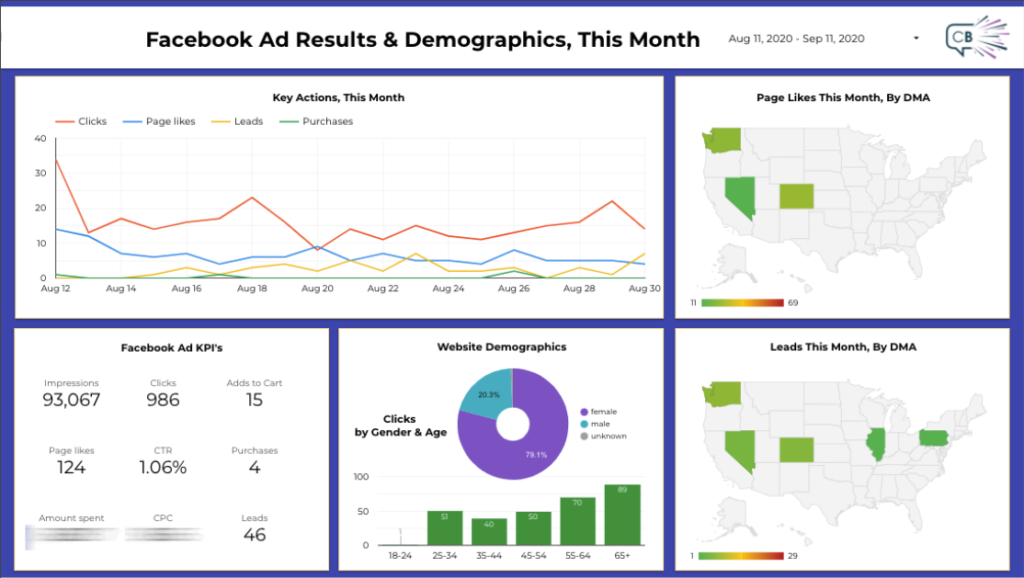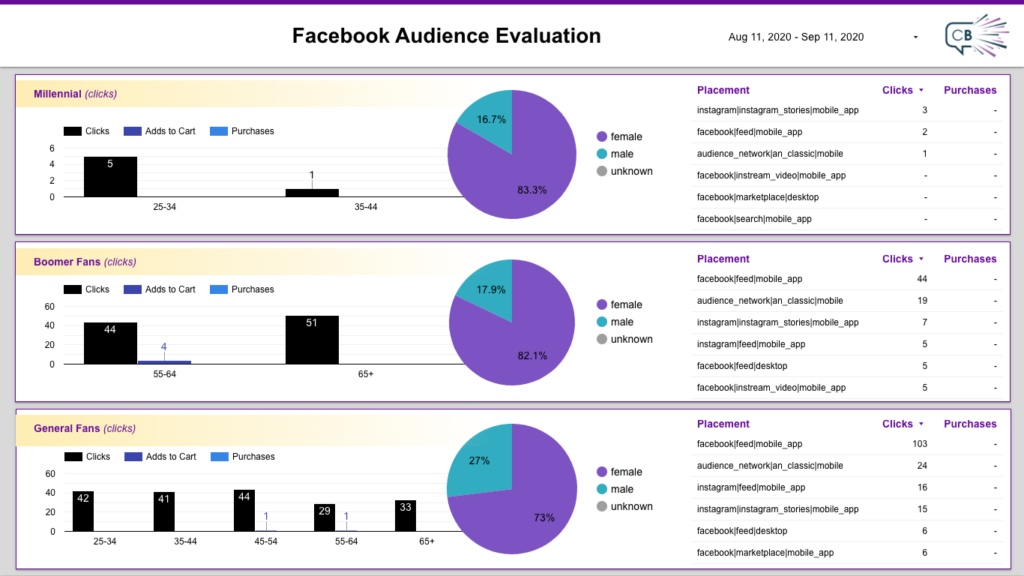There once was a time when we used to code on social media pages, Yahoo! was a popular search engine, and people were accustomed to using static reports to drive marketing decisions. However, we have now entered a new era of digital marketing where we can show real time numbers and navigate the changing landscape in half the time.
Before we jump any further, do we need to discuss what a live dashboard is compared to a static dashboard? Well, according to Data Pine, it is the process used to represent key performance indicators (KPI) and relevant business metrics in a visual and interactive way. It is typically used through a web based application such as Google Data Studio. For digital marketers, this is an invaluable tool that allows us to drive decision making and create new complex stories to captivate engaged audiences.
This method is different from the traditional static report that companies have been using for decades. Static reporting is a report that includes static data derived from a database, which generally pulls numbers for a set date range. They typically are shared using PDF or HTML format and depict a specific moment in time. Think about it as a screenshot of your marketing efforts versus a living report that can continue to add updated data as you see fit.
Both types of reports can be very useful, but here are 5 reasons why dashboard reporting is better for your marketing strategy.
1. Dashboard reports update in real-time.
When creating a static report, data must be pulled or entered each time you create a report. That report is only as up-to-date as the last time that particular data was put into the reporting program. In comparison, when using dashboard reporting, that specific data is updated in real-time, meaning your reports will always be relevant and up-to-date without having to do the extra work of pulling or reentering the most current information from your data source. Also, reports can be put into a fixed time, so if you want to see a specific period, such as the previous quarter’s ad spend, you can reference that as well.
2. Dashboard reports are much more accurate.
Dashboard reports can be much more exact because they typically use data connectors to collect data. These connectors bring the data directly from the data sources such as Facebook Business Manager, Google Analytics, etc. This process helps create more accurate reports by eliminating human error. Since the program pulls the data directly, we don’t have to worry about entering numbers incorrectly or pulling the wrong date range. We have peace of mind that we have access to the necessary data, while not having to worry about making simple mistakes that can be costly to your reporting efforts.
3. Dashboard reports can be more complex.
When reporting, creating unique and compelling ways to tell stories is essential, and this is where dashboard reports reign supreme. These web-based programs allow us access to some very impressive charts, graphs, etc. that can be paired with our data to visualize KPIs in ways that can help make sound decisions that boost your marketing efforts. For example, we can show conversions by state on a US map, and we can show age and gender in a stacked bar graph.
Because the charts and graphs are interactive, it also gives us access to more data. If you are a large organization, I’m sure you’ve had the problem of all the data not fitting in one page of a table chart, so your report ends up being 10 pages of line items with metrics that takes up too much room on your report. These interactive charts allow us to take up less space by employing scrollable data.
4. Dashboard reporting is much easier.
Dashboard reporting is a simpler process than static reporting. Monthly reporting goes from creating a new PDF every month on a static report to simply changing a date range in the dashboard. Let’s say you need to create another report similar to the one from the previous month, but it needs to be a separate report. You have the ability to copy a report and change the dates to reflect that new month’s data within the report. It is also easier to share and collaborate with colleagues since you can now grant others access to the report and assign them as viewers, editors, or even owners of the dashboard.
5. Dashboard reporting saves time.
With the other four points I made, this one should come as a no-brainer: dashboard reporting saves massive amounts of time. With the ability to report in real time, reporting comes down to letting the connectors do the work for you by pulling the data instead of inputting the data manually. With more accurate reporting, we no longer need to take time to fix our mistakes that we catch at the end of the report. We can trust that our data is accurate—though double-checking never hurts—and we can cut down on time re-entering, re-pulling or even worse, redoing the entire report (we’ve all been there). Employing these web-based programs eliminates the manual creation of graphs, charts, and maps since the program creates them on its own.
Dashboard reporting is something that is easily available for marketing professionals. It is definitely time to make the switch and create new and thoughtful ways to tell the story of your marketing efforts. Dashboard reporting should be driving decision making and help create useful and impactful strategies for your company moving forward.
Want to get started? Reach out today.





